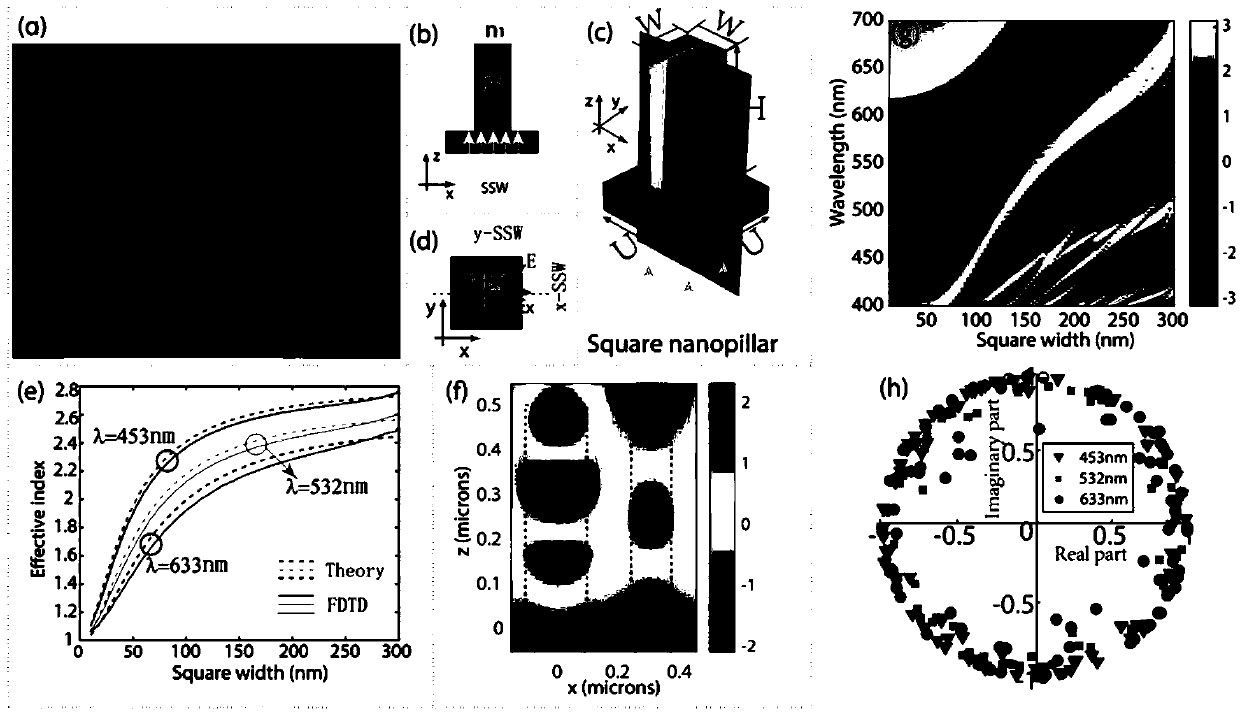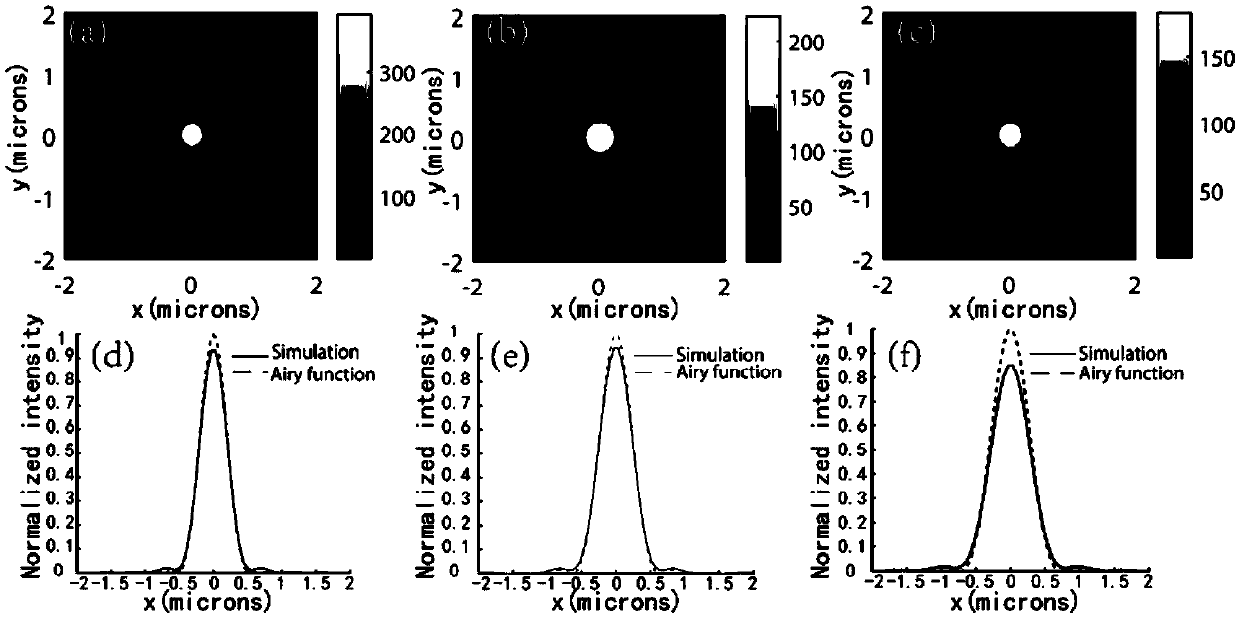Hyperplane lens based on crystalline titanium dioxide
A titanium dioxide and hyperplane technology, applied in the field of optics, can solve the problems of low focusing efficiency of visible light lenses and high absorption loss in visible light bands, and achieve high performance
- Summary
- Abstract
- Description
- Claims
- Application Information
AI Technical Summary
Problems solved by technology
Method used
Image
Examples
Embodiment Construction
[0021] The invention is based on the titanium dioxide material, which has a high refractive index of about 2.5 in the visible light band, low loss and high transmittance, and becomes an ideal visible light band hyperplane material. A highly efficient and thinner hyperplane lens (with a thickness of 400-700nm, preferably 488nm) is realized by using a different phase realization method—the planar symmetric waveguide theory. In order to illustrate this design method, we specifically designed the red, green and blue wavelengths (λ 0 = 453nm, 532nm, 633nm), the thickness of these lenses is only 488nm, but they can focus the incident plane light into a very symmetrical focal spot close to the diffraction limit, and the focusing efficiency is as high as 83%. In addition, the theoretical chromatic aberration of these lenses in the visible light band is only about 10% outside their respective working wavelengths. The phase modulation mechanism of this kind of lens is based on a simple...
PUM
 Login to View More
Login to View More Abstract
Description
Claims
Application Information
 Login to View More
Login to View More - R&D
- Intellectual Property
- Life Sciences
- Materials
- Tech Scout
- Unparalleled Data Quality
- Higher Quality Content
- 60% Fewer Hallucinations
Browse by: Latest US Patents, China's latest patents, Technical Efficacy Thesaurus, Application Domain, Technology Topic, Popular Technical Reports.
© 2025 PatSnap. All rights reserved.Legal|Privacy policy|Modern Slavery Act Transparency Statement|Sitemap|About US| Contact US: help@patsnap.com



